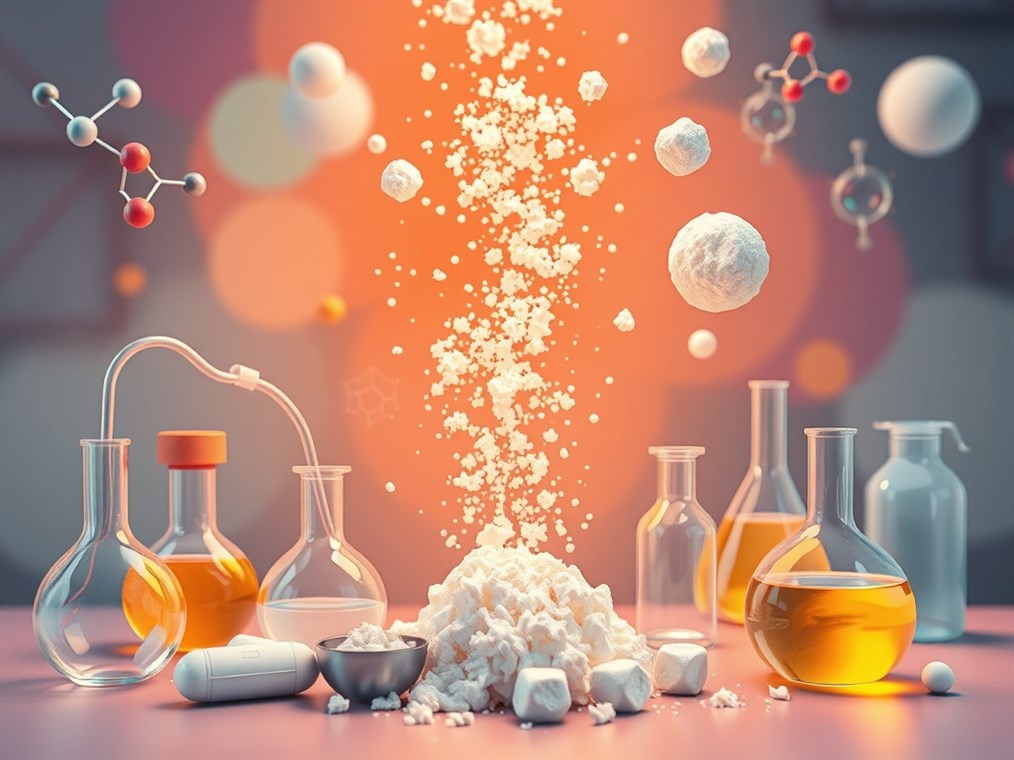Calcium Gluconate: How It’s Made (It’s Not Magic!)
Calcium gluconate. It sounds like something out of a science lab, right? And, well, it is! This stuff is a mineral supplement and medication that doctors reach for when calcium levels are low, potassium gets too high, or even to combat magnesium overdoses. Plus, it’s a go-to for those nasty hydrofluoric acid burns. But have you ever stopped to wonder, “How do they actually make this stuff?” Let’s pull back the curtain and take a look.
So, what exactly is calcium gluconate? Simply put, it’s the calcium salt of gluconic acid – which itself is what happens when you oxidize glucose. Chemically speaking, it’s C12H22CaO14 (if you’re into that sort of thing!). In real life, it looks like a white, crystalline powder, and it doesn’t smell like much of anything. More importantly, it’s crucial for all sorts of things your body does, from flexing your muscles and keeping your heart ticking to clotting blood and firing nerve signals. Pretty important stuff!
Now, let’s get down to brass tacks: how do you make it? There are basically three main ways the pros do it:
- Chemical Oxidation: Think of this as a controlled chemical reaction where they force glucose to give up some electrons.
- Electrolytic Oxidation: This involves a bit of electrical wizardry to get the job done.
- Fermentation: Just like brewing beer, but for science! Tiny organisms do the heavy lifting.
Let’s break each of these down a bit more.
Chemical Oxidation: The Straightforward Approach
Okay, details on the hypochlorite method are a bit scarce, even after digging around. But the general idea is that you’re reacting glucose with hypochlorite – basically, a type of bleach – under very controlled conditions. This forces the glucose to oxidize into gluconic acid, which then hooks up with a calcium source to become calcium gluconate. It’s like a chemical dance, but we’d need more specifics to really nail down the choreography.
Electrolytic Oxidation: Zapping Glucose into Shape
This method uses electricity to transform glucose into gluconic acid. Here’s the basic setup:
- The Electrolyte Bath: Imagine a pool of water mixed with sodium bromide (NaBr) and calcium carbonate (CaCO3).
- The Electrodes: Two graphite rods, acting as the positive (anode) and negative (cathode) terminals.
- The Process: You dissolve glucose in the electrolyte and then send a current through the solution. The gluconic acid that forms is then neutralized by the calcium carbonate, which results in calcium gluconate.
Here’s how it works, step-by-step:
- Zap! At the anode, glucose gets oxidized and turns into gluconic acid.
- Neutralize: The gluconic acid then meets calcium carbonate, and they react to form calcium gluconate.
- Crystal Clear: The solution is cooled, and the calcium gluconate crystallizes out. These crystals are then filtered, and the leftover liquid can be used again. Waste not, want not!
Electrolysis in Action (a snapshot):
- Anode: Graphite (about the size of a small tile)
- Cathode: Graphite (same size)
- Electrolyte: 30 g NaBr + 40 g CaCO3 in water
- Glucose: 20 grams per liter of solution
- Current: Think of it like a gentle tingle, 2-3 amps per square decimeter
- Temperature: Warm, around 45-50 °C
- Voltage: A standard wall socket is way more powerful, this is only 3.5-4.5 volts
- Success Rate: Pretty good, around 90% yield!
- Almost Done: 95% of the glucose gets converted.
Why Electrolytic Oxidation Rocks:
- You get more bang for your buck (higher yield).
- Most of the glucose gets used up (high conversion rate).
- No nasty byproducts to worry about.
- It’s easier on the environment.
Fermentation: Letting the Bugs Do the Work
Just like making beer or yogurt, fermentation uses tiny microorganisms to do the hard work of converting glucose into gluconic acid.
Here’s the lowdown:
- The Right Bug: Aspergillus niger is a popular choice.
- Bug Food: A sugary (dextrose) broth with some added salts to keep the little guys happy.
- The Brew: The microorganisms are grown in this broth under carefully controlled conditions (right pH, temperature, and plenty of air).
- Neutralizing the Acid: Calcium carbonate is added bit by bit to neutralize the gluconic acid as it’s produced.
- Clean Up: The calcium gluconate is then extracted and purified through a series of steps:
- Getting rid of any color with charcoal.
- Filtering out the gunk.
- Using methanol to help the calcium gluconate precipitate out.
- Spinning it in a centrifuge.
- Drying it under vacuum.
- Turning it into a fine powder.
Fermentation Recipe (example):
- Bug: Aspergillus niger
- pH: A tiny bit acidic, 6.5 ± 0.1
- Temperature: Warm, like a summer day, 29 ± 1 °C
- Mixing: Like stirring a cup of coffee, 250 ± 10 rpm
- Air: A gentle breeze, 1.0-1.5 volumes of air per volume of liquid per minute
- Time: About a day, 24 ± 2 hours
Why Fermentation is Cool:
- Super precise, so you get a really pure product.
- Can be tweaked to make calcium gluconate pure enough to inject.
The Direct Approach: Mixing Acid and Calcium
There’s also a more direct way to make calcium gluconate: simply react gluconic acid with either calcium hydroxide or calcium carbonate.
- Slowly add calcium hydroxide to gluconic acid in water.
- Stir the mixture for a couple of hours and then filter it while it’s still hot.
- Distill the filtered liquid to remove the water, leaving behind a calcium gluconate gel.
The Chemistry:
Ca(OH)2 + 2HOCH2(CHOH)4COOH → Ca(HOCH2(CHOH)4COO)2 + 2H2O
Making Sure It’s Good Stuff
No matter how you make it, calcium gluconate has to be carefully tested to make sure it’s pure and meets all the necessary standards. This includes checking for things like purity, how much calcium gluconate is actually there, and making sure there are no unwanted bacteria or molds.
What’s It All Used For?
Calcium gluconate is a real workhorse in several industries:
- Medicine: As we said, it’s used to treat low calcium, high potassium, and magnesium overdoses.
- Food: It’s added to some foods to boost their calcium content.
- Veterinary Medicine: Vets use it to treat calcium deficiencies in animals.
- Farming: It can help plants absorb nutrients.
- Katha Industry: Used in the manufacture of Katha, a chewing substance.
The Bottom Line
So, there you have it! Calcium gluconate can be made in a few different ways, each with its pros and cons. The best method really depends on what you’re looking for – how much you want to make, how pure it needs to be, and what resources you have available. But no matter how it’s made, calcium gluconate plays a vital role in keeping us healthy and powering various industries. Who knew something so “sciency” could be so important?

